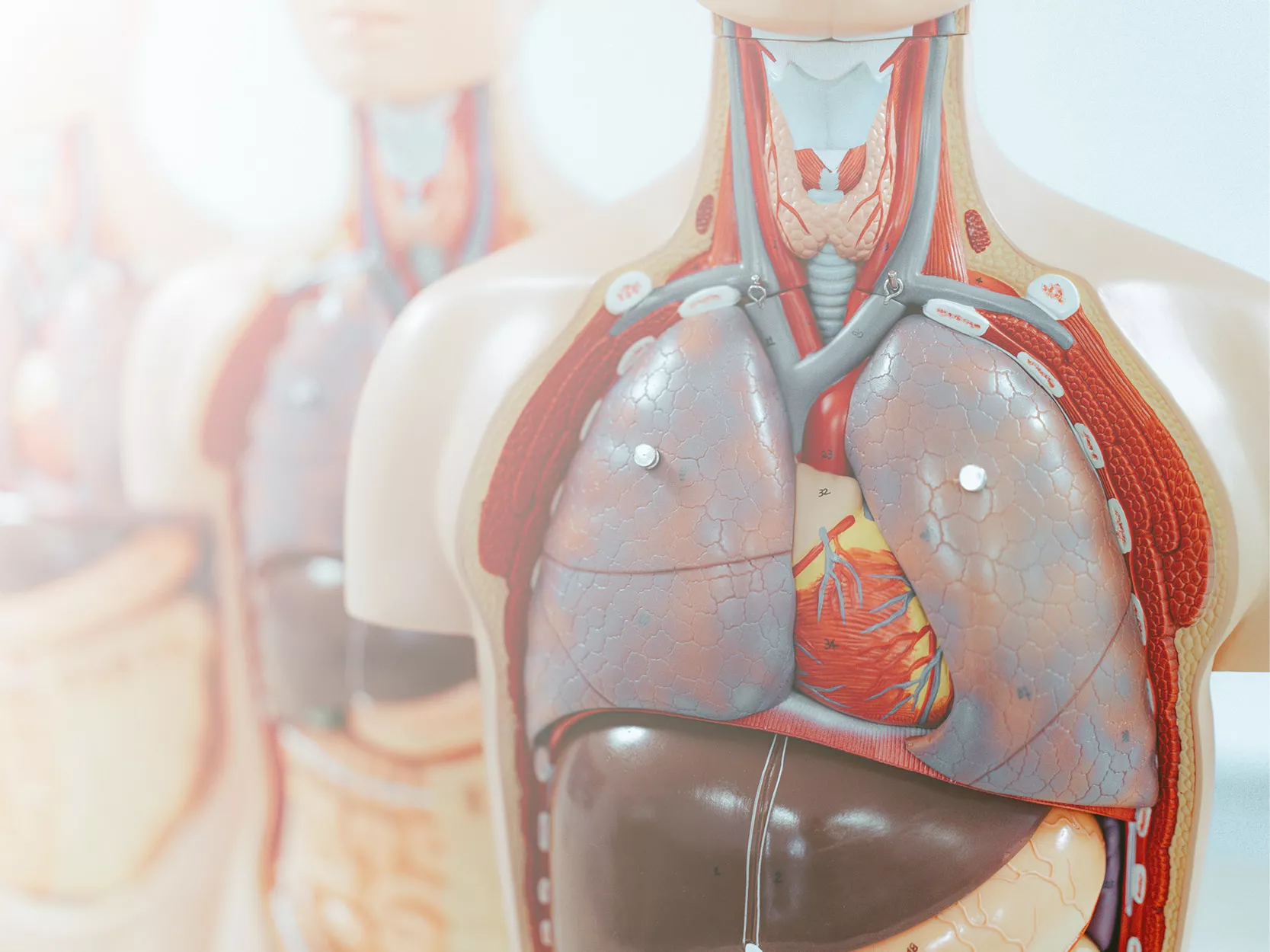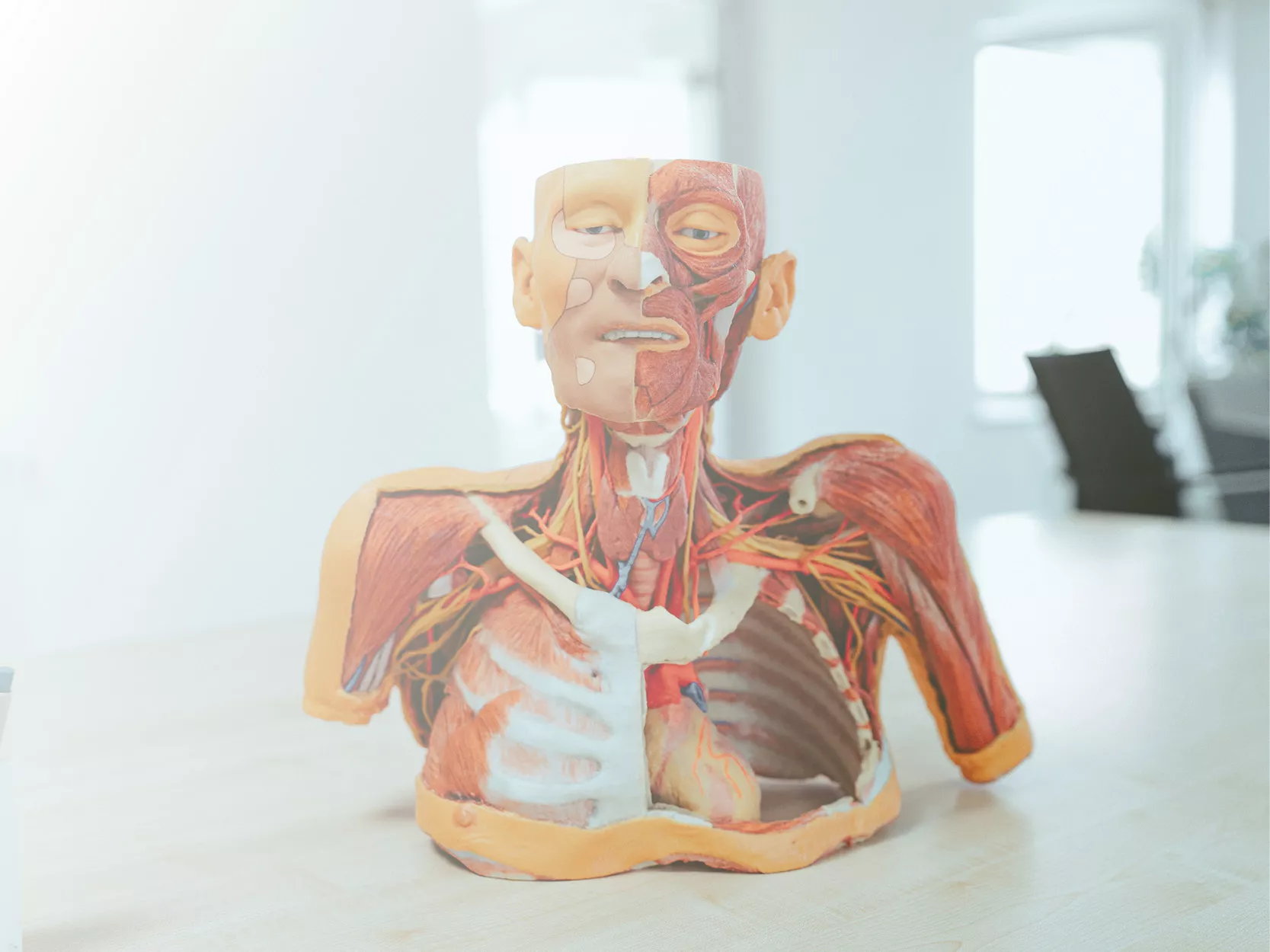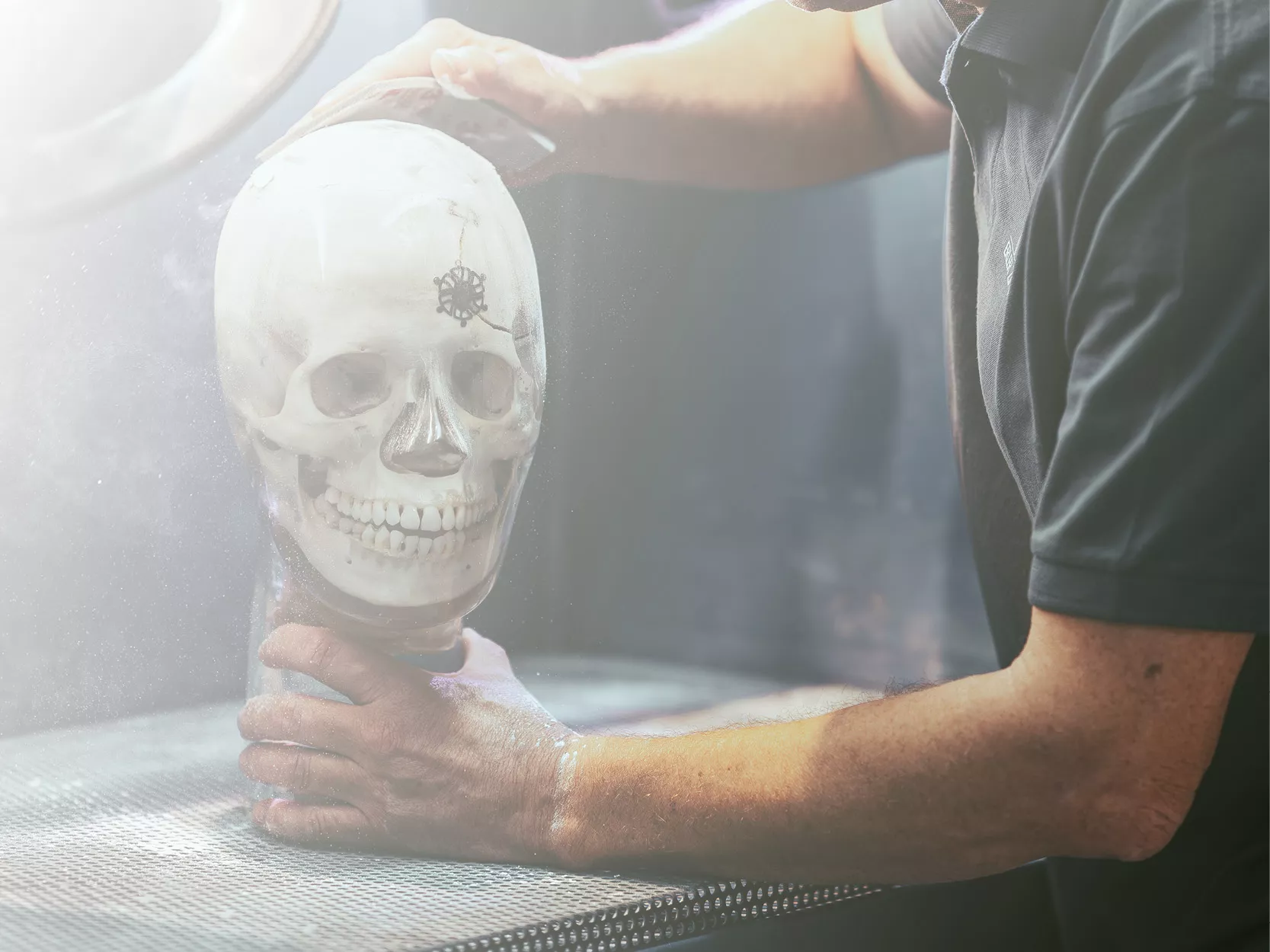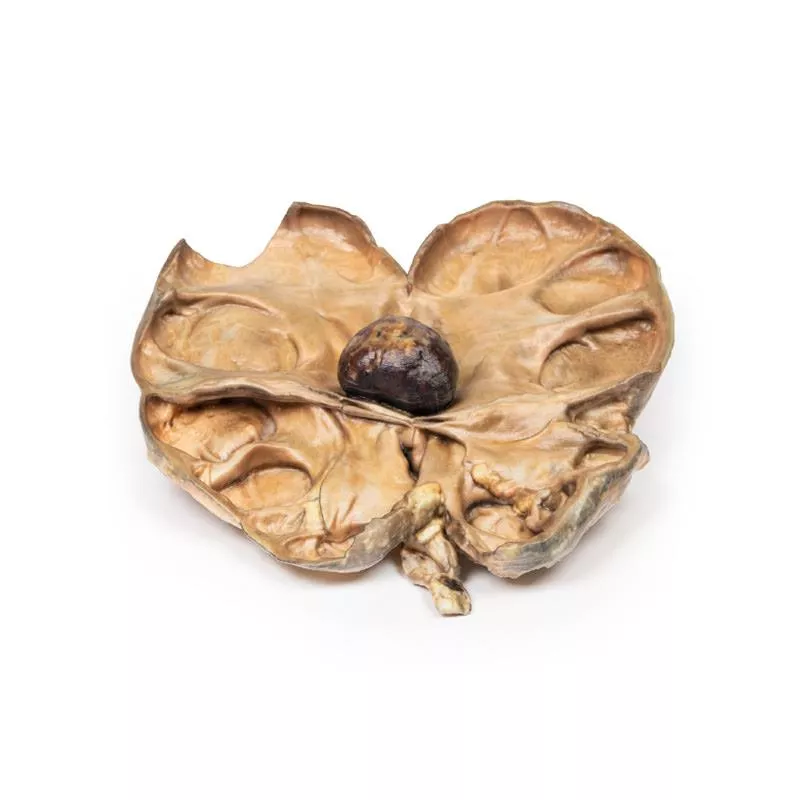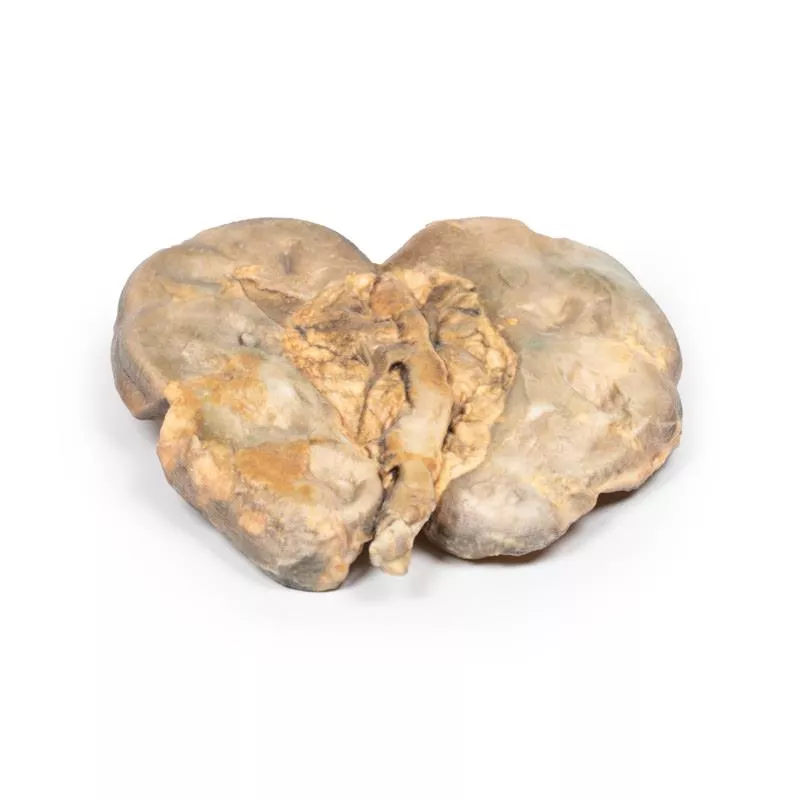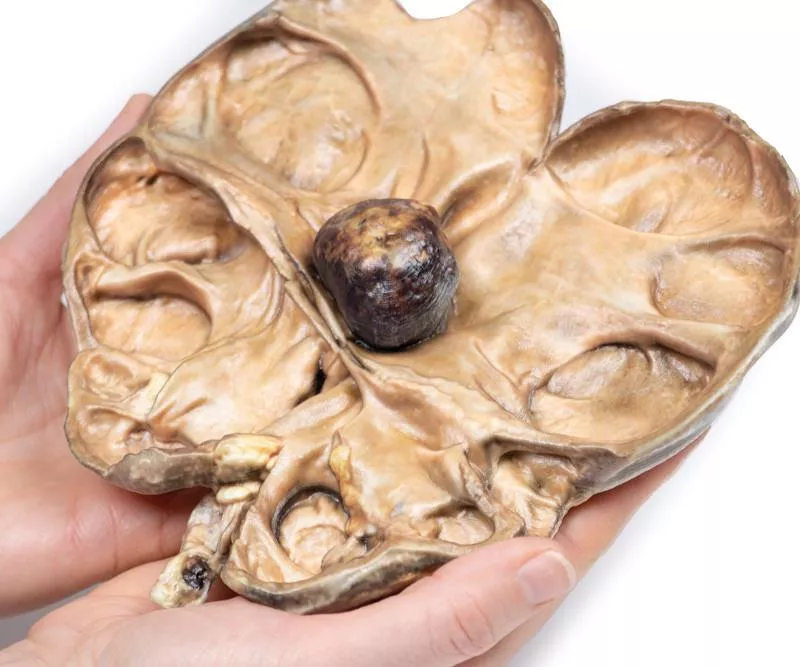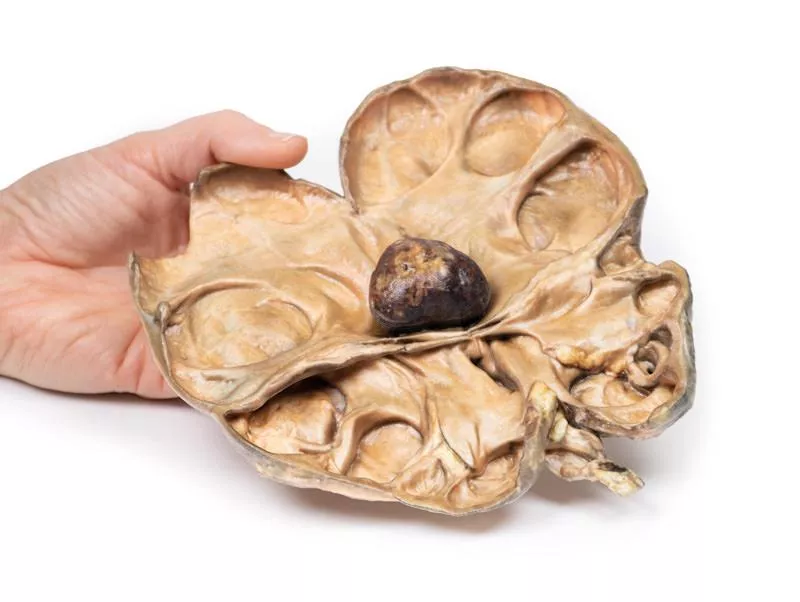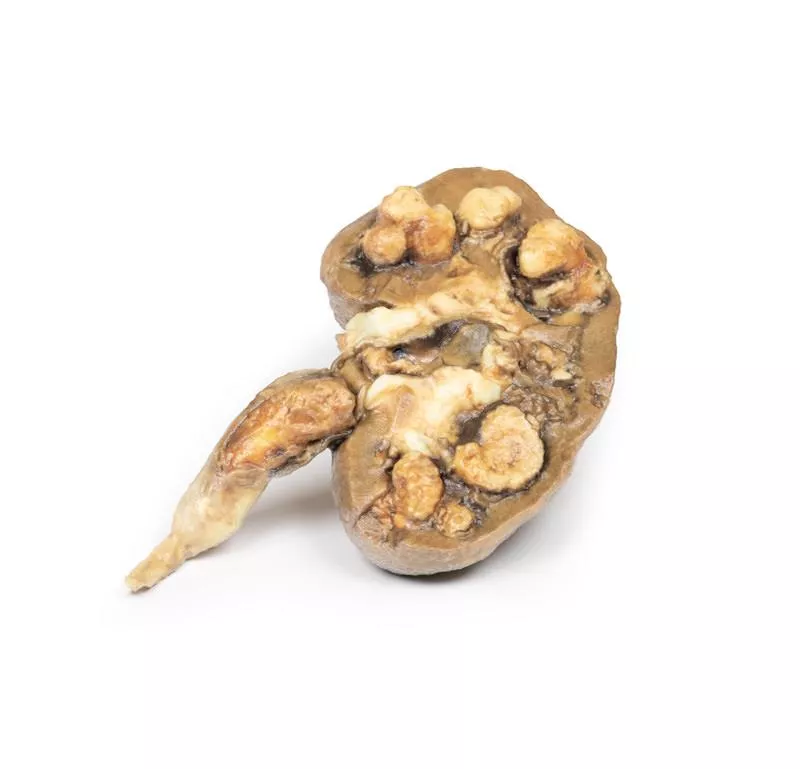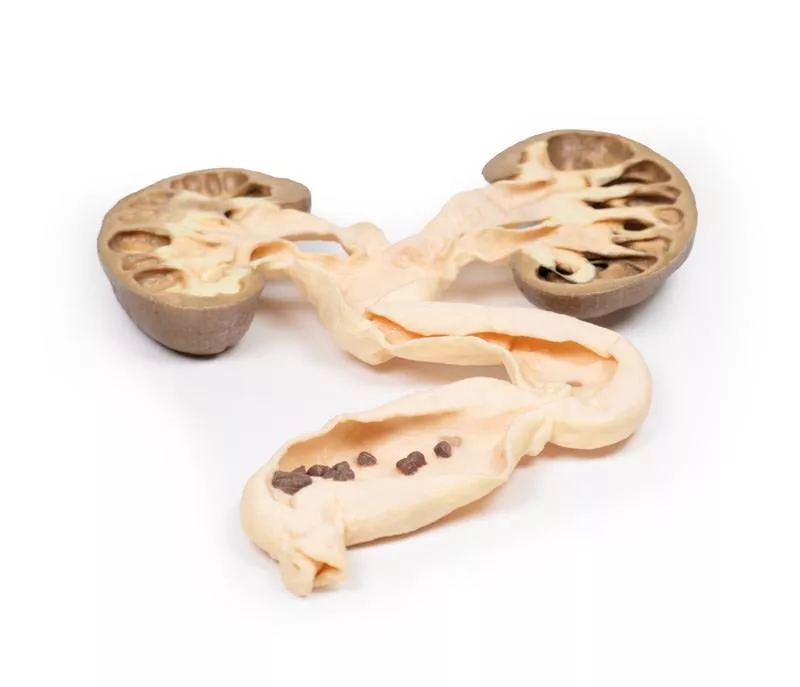Product information "Hydronephrosis and Hydroureter Caused by Obstruction by a Renal Calculus"
Clinical History
A 72-year-old female presented with colicky flank pain, malaise, and intermittent haematuria. Blood tests showed significantly impaired renal function. CT scan revealed congenital absence of the left kidney and severe hydronephrosis and hydroureter on the right side, caused by obstruction from a small calculus. Percutaneous lithotomy was attempted to remove the stone, but the patient died from a cardiac event during the procedure.
Pathology
The right kidney specimen is grossly enlarged and partially bisected. There is marked dilation of the pelvi-calyceal system and significant cortical atrophy. A large brown calculus is visible in the renal pelvis at the ureteropelvic junction.
Further Information
Urolithiasis (kidney stones) affects up to 10% of people. Stones can form anywhere in the urinary tract, most commonly in the kidneys. Risk factors include male sex, urine composition changes (e.g., hypercalciuria), metabolic disorders (cystinuria, gout), diet (high oxalate, animal protein), low fluid intake, and hot climates. Most stones are unilateral. Symptoms include severe colicky pain, haematuria, nausea, vomiting, and urinary urgency. Pain occurs when stones move into the ureter, often resolving once the stone passes.
Diagnosis is based on history and imaging such as non-contrast CT or ultrasound. Untreated obstruction causes pressure buildup leading to hydronephrosis, cortical atrophy, ischemic damage, and fibrosis, ultimately risking renal failure. Stones also predispose to infection due to obstruction and urothelial trauma.
Treatment includes analgesics (NSAIDs, opioids) and medications to facilitate stone passage (alpha blockers, calcium channel blockers). If conservative treatment fails or complications occur, surgical options include lithotripsy, laparoscopic or percutaneous stone removal. Open surgery is rarely needed.
A 72-year-old female presented with colicky flank pain, malaise, and intermittent haematuria. Blood tests showed significantly impaired renal function. CT scan revealed congenital absence of the left kidney and severe hydronephrosis and hydroureter on the right side, caused by obstruction from a small calculus. Percutaneous lithotomy was attempted to remove the stone, but the patient died from a cardiac event during the procedure.
Pathology
The right kidney specimen is grossly enlarged and partially bisected. There is marked dilation of the pelvi-calyceal system and significant cortical atrophy. A large brown calculus is visible in the renal pelvis at the ureteropelvic junction.
Further Information
Urolithiasis (kidney stones) affects up to 10% of people. Stones can form anywhere in the urinary tract, most commonly in the kidneys. Risk factors include male sex, urine composition changes (e.g., hypercalciuria), metabolic disorders (cystinuria, gout), diet (high oxalate, animal protein), low fluid intake, and hot climates. Most stones are unilateral. Symptoms include severe colicky pain, haematuria, nausea, vomiting, and urinary urgency. Pain occurs when stones move into the ureter, often resolving once the stone passes.
Diagnosis is based on history and imaging such as non-contrast CT or ultrasound. Untreated obstruction causes pressure buildup leading to hydronephrosis, cortical atrophy, ischemic damage, and fibrosis, ultimately risking renal failure. Stones also predispose to infection due to obstruction and urothelial trauma.
Treatment includes analgesics (NSAIDs, opioids) and medications to facilitate stone passage (alpha blockers, calcium channel blockers). If conservative treatment fails or complications occur, surgical options include lithotripsy, laparoscopic or percutaneous stone removal. Open surgery is rarely needed.
Erler-Zimmer
Erler-Zimmer GmbH & Co.KG
Hauptstrasse 27
77886 Lauf
Germany
info@erler-zimmer.de
Achtung! Medizinisches Ausbildungsmaterial, kein Spielzeug. Nicht geeignet für Personen unter 14 Jahren.
Attention! Medical training material, not a toy. Not suitable for persons under 14 years of age.





